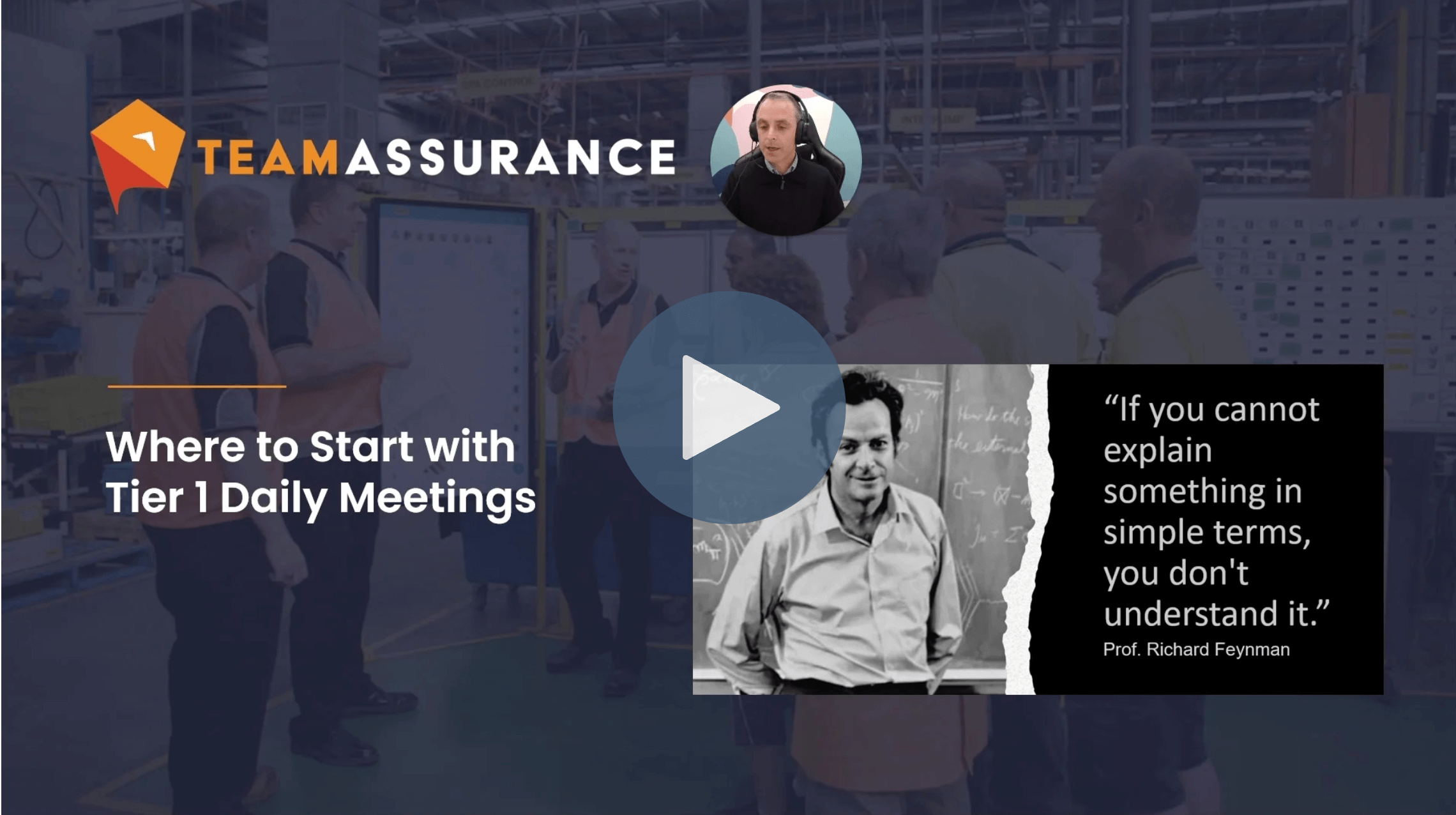
In this article we take a brief look at the significance of Tier 1 meetings and provides practical advice on how to implement them successfully. We summarise points taken from our Tier 1 Webinar – available on demand here.
Tier 1 meetings play a critical role in achieving alignment and actually conducting improvement activity by directly engaging the frontline workforce. These members of your organisation are often the closest to the customers, the processes, and the daily operations.
Tier 1 meetings are essential because they ensure that the frontline, who represent the majority of the workforce in many industries, are not just executing tasks but are actively engaged in the strategic direction of the company.
You can tap into a wealth of knowledge and gain insights into what truly runs the show. By actively involving frontline employee you can ensure that any strategic initiatives are implemented successfully.
Conversely, these meetings serve as a platform for two-way communication where insights from the ground can inform strategic decisions.
Engagement is Key: At the heart of successful Tier 1 meetings is engagement. These meetings should be seen not as administrative check-ins but as vital opportunities to engage staff at all levels.
Engagement in this context means understanding the challenges faced by frontline workers, acknowledging their contributions, and actively seeking their input on process improvements and decision-making.
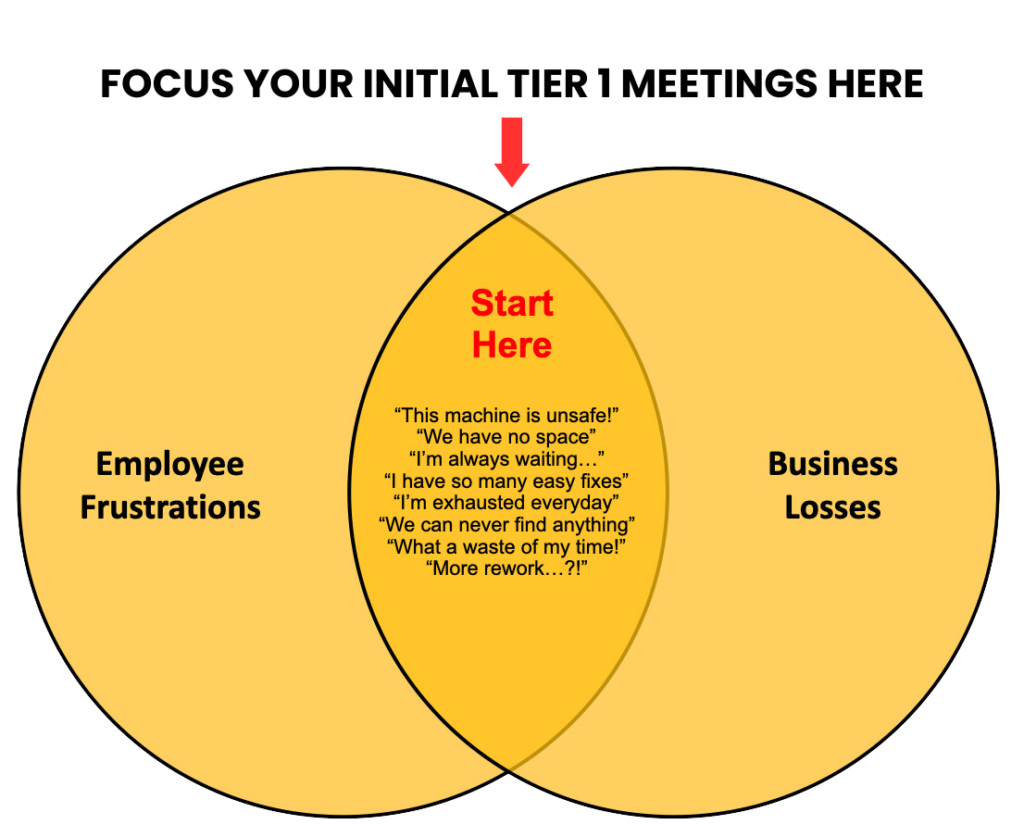
Simplicity in Structure:
Following the adage “simplicity is the ultimate sophistication,” Tier 1 meetings should be straightforward.
They ought to focus on key performance indicators (KPIs) that are easy to understand and relevant to the daily responsibilities of the frontline staff. Overcomplicating these meetings with jargon or excessive metrics can alienate participants and obscure the primary goals of process improvement and strategic alignment.
Methodology Over Admin:
A common pitfall in implementing Tier 1 meetings is the perceived administrative burden. To overcome this, it’s crucial to establish a simple yet effective methodology that minimizes bureaucracy.
Utilizing digital tools can streamline the process, making it easier for team members to log issues, track progress, and communicate outcomes without getting bogged down by paperwork.
1. Establish the ‘Why’:
Clearly articulate the purpose of Tier 1 meetings to the team. Ensure everyone understands that these meetings are not just procedural but are critical to the team’s and the organization’s success.
2. Define Clear Objectives:
Start with clear, manageable goals. Whether it’s improving a particular process, enhancing customer satisfaction, or reducing waste, objectives should be specific, measurable, achievable, relevant, and time-bound (SMART).
3. Foster an Open Environment:
Encourage openness and transparency. Frontline workers should feel comfortable sharing their insights and challenges without fear of reprisal. This openness not only promotes trust but can also lead to valuable discoveries that lead to significant improvements. This is often known as a ‘no blame’ culture within an organisation.
4. Use Technology Wisely:
Leverage technology to facilitate these meetings.
Digital tools like real-time action tracking, mobile checklists, and visual management reports can enhance the efficiency and effectiveness of Tier 1 meetings. These tools support teams in making quick adjustments, holding focused discussions, and making data-driven decisions.
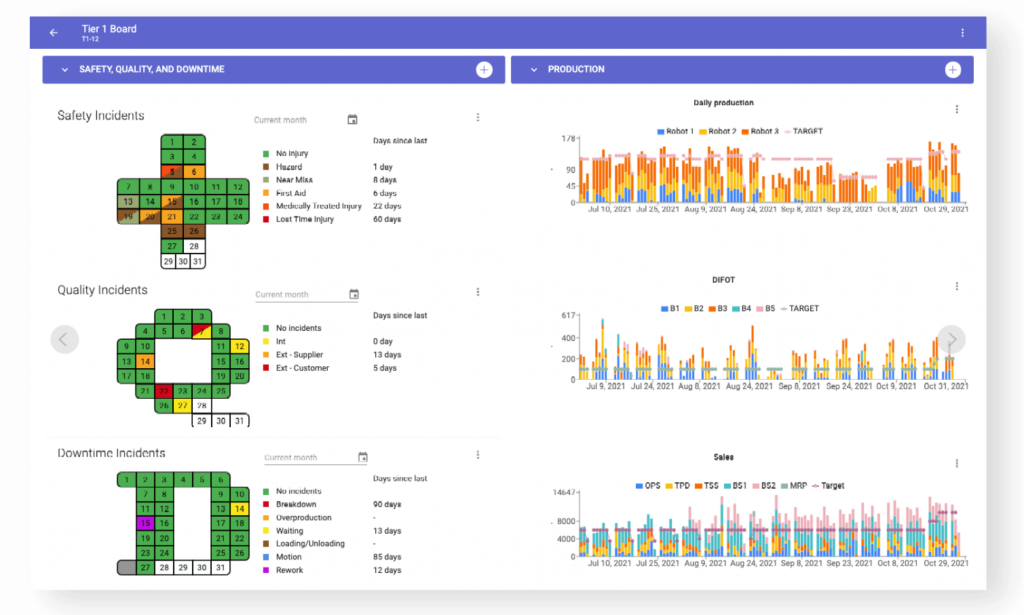
Tier 1 meetings should also evolve based on feedback and changing business needs. Like any processes in the organisation, you should regularly review / refine these meetings.
As the foundation of improvement you want to ensure they remain relevant and continue to add value.
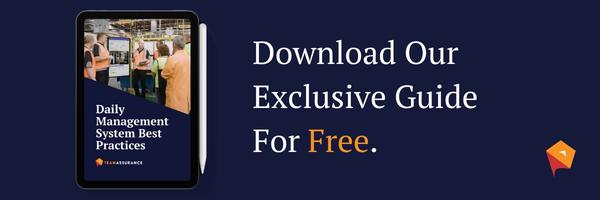
Tier 1 meetings must be supported by standardised problem solving techniques, Standard Operating Procedures (SOPs), and a digital Daily Management system. These improve the effectiveness and efficiency of the entire PDCA loop – which is key to achieving continuous improvement success.
However, organisations should ensure that all standards and processes are developed simultaneously rather than in isolation. Without considering all adjacent processes we can end up with misalignment of people, information silos, and sub-optimal processes.
The illustration below demonstrates how we designed TeamAssurance to avoid locally optimised, disconnected ‘Point Solutions’ (digital or analog) that do not help, and may even hinder the progress toward your goals.
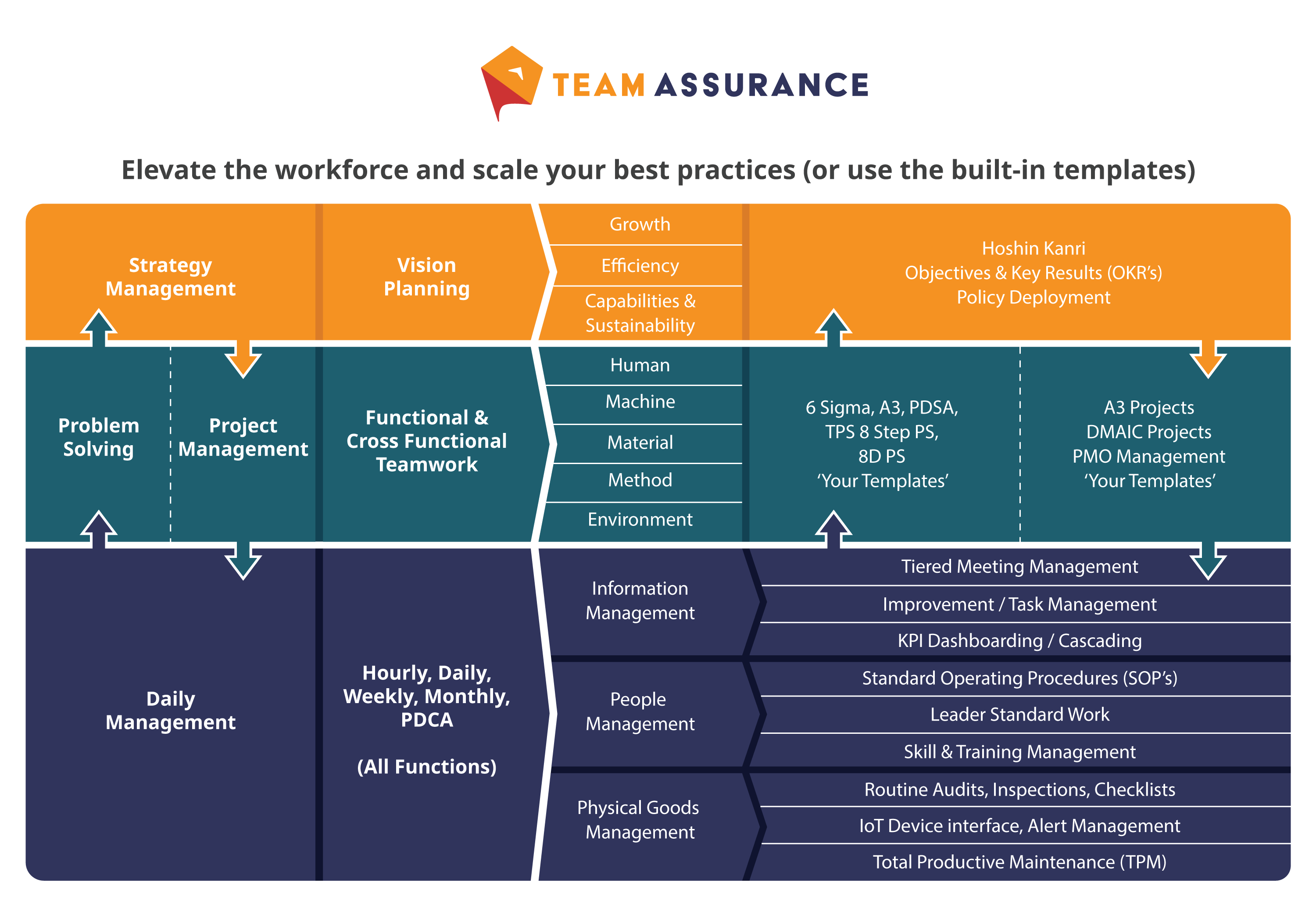
If you’re a business in need (or a consultant with clients in need) and you’d like to explore the opportunities of digital tools for Tier 1 meetings – contact us for a demonstration of TeamAssurance today.